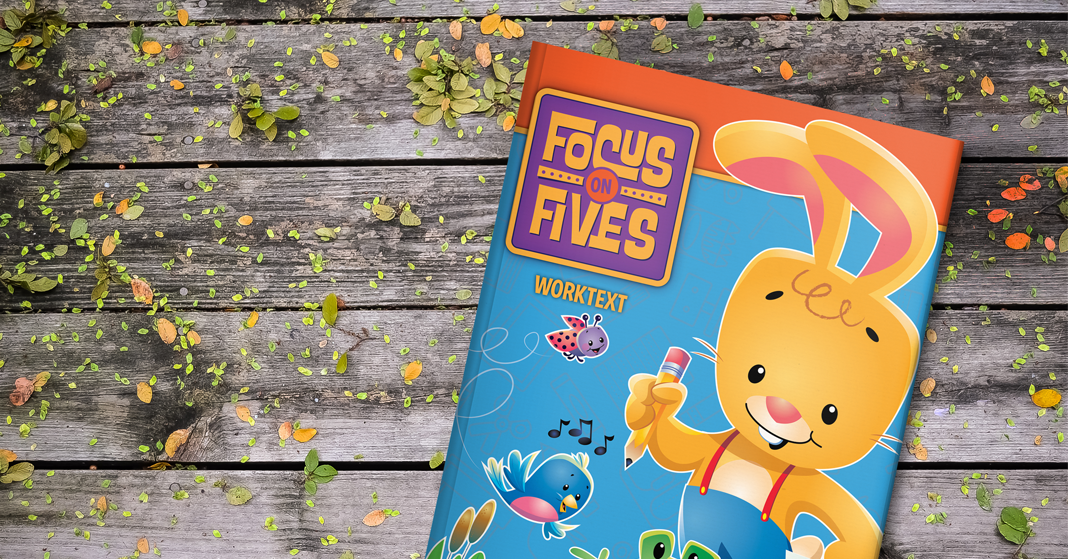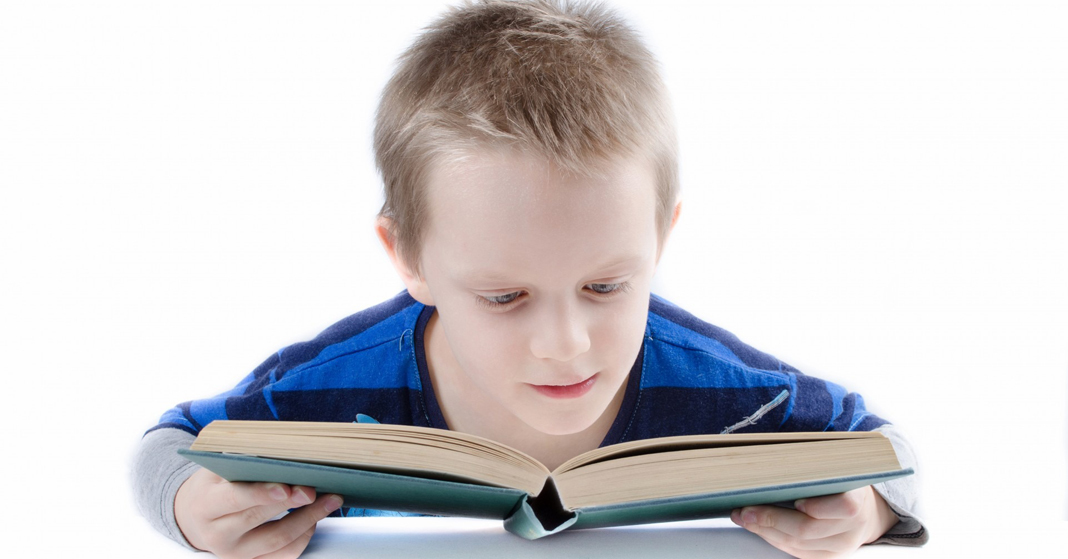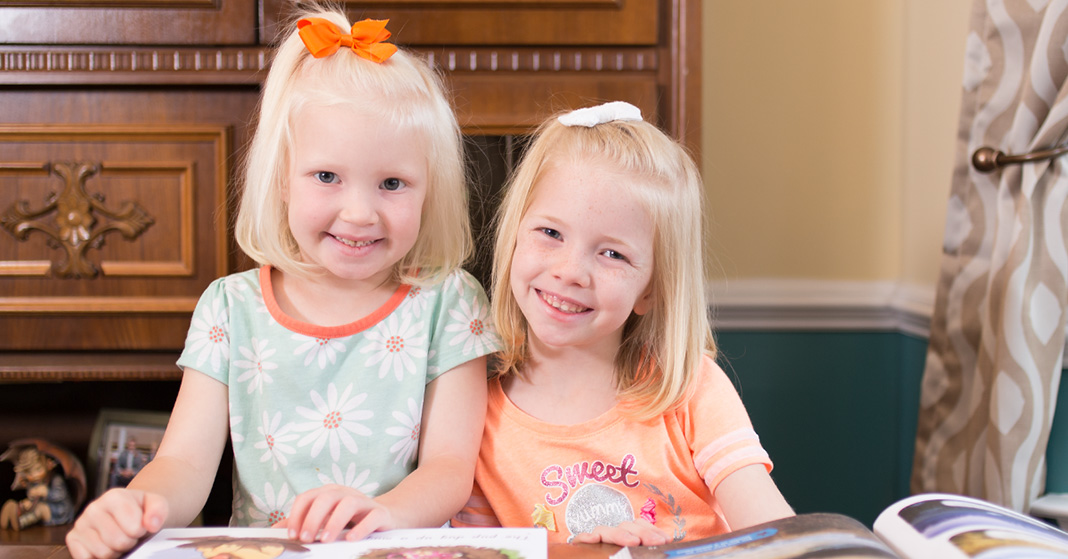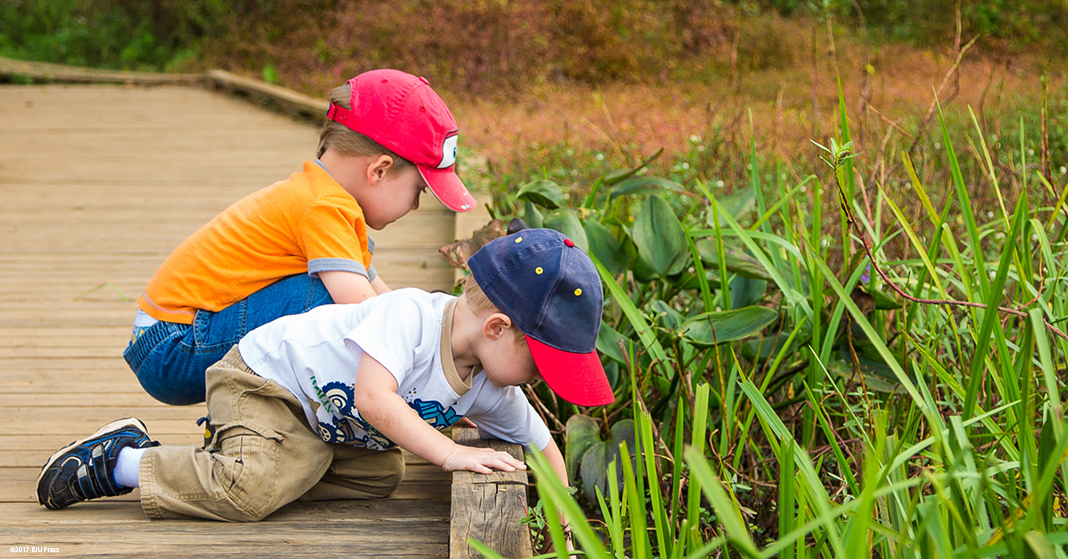
I have a confession—I never wanted to homeschool a kindergartner. I was afraid to. My training didn’t include early childhood education. I didn’t know how to teach someone to read. And I didn’t think that I was a good enough to teach my child all the foundational skills that she would need to succeed in her education. But the Lord made it abundantly clear that I was to be my daughter’s kindergarten teacher. I wrestled with the Lord about it, and He reminded me of the promise of I Thessalonians 5:24, “Faithful is He that calleth you, who also will do it.” The Lord did equip me for the task of homeschooling my daughter, and the main means that He used was the Focus on Fives curriculum from BJU Press.
An Introduction to the Focus on Fives Curriculum
The Focus on Fives curriculum replaces BJU Press’s former kindergarten curriculum, K5 Beginnings, and it is a major upgrade. The pedagogy—or teaching methods—and the scope and sequence are very similar to K5 Beginnings, but the format is streamlined and the content, including the artwork, has been updated.
When you order the Focus on Fives textbook kit, be ready for a lot of stuff. You receive 6 teacher editions—which initially looks very overwhelming, but it’s actually wonderful because everything you need as a teacher is in one place. Your child receives 2 workbooks—a general workbook and a phonics workbook—as well as 34 full-color reading books. You’ll also get the K5 Phonics and Review Cards, the Write Now! workbook, the Phonics charts, and the teaching visuals packet.
BJU Press is releasing the Focus on Fives video course for the 2020–21 school year. Mrs. Becky Rulapaugh teaches this course. She currently teaches the K5 Math video course that my daughter loves. She’s very good at keeping my daughter engaged.
Lesson Features of Focus on Fives
Heritage Studies and Science
Every Focus on Fives lesson starts off with a heritage studies or science connection. For example, the program starts off with a unit about community helpers. We learned about police officers, firefighters and fire safety, postal workers, doctors, and dentists. The program introduces the topics with a listening story or a composition activity to encourage critical thinking skills. Some lessons also include simple activities, like demonstrating how brushing helps your teeth, to enhance comprehension.
Phonics Foundations
At the heart of every lesson is language arts instruction. BJU Press teaches children to read using a combination of a phonics-based word-family approach along with sight words. The word-family approach ensures that every new sound your child learns can be easily “hooked onto” previous knowledge, and the use of high-frequency sight words helps your child read meaningful text even before you’ve introduced all the sounds.
Language Arts
In addition to phonics instruction, the language arts portion of the lesson covers basic English topics like sentence punctuation, capitalization, the use of plurals and other concepts necessary for reading comprehension. Some lessons will also use phonics characters to help your child identify syllabic patterns to aid them in reading unfamiliar words. Finally, all lessons include handwriting instruction and practice.
Enrichment Activities
Every lesson also includes a list of enrichment activities that go along with the lesson’s topic. The teacher edition includes suggested read-alouds, games, crafts, special snacks, and more. I don’t usually have time to do all the suggested activities, but I do like to pick and choose as time allows.
Reading Books
Although we practice reading every day with short phonics stories, the highlight of our week is our reading book lesson. On those days, we unveil our “big book” of the week. These 8-page, 4-color books reinforce everything that we have learned during the previous weeks and give us good opportunities to develop comprehension and critical thinking skills.
What I love about Focus on Fives
The Focus on Fives teacher editions, in my estimation, are invaluable because they have given me the confidence to teach my daughter. Everything is laid out for me in one place, so I know exactly what I need to do each day. And even though the lessons are not scripted, the teacher edition gives me all the help I need. It’s kind of like having a relative with medical training come with you to a doctor’s appointment—that relative might not be the one in charge, but his or her expert presence certainly makes you feel more confident.
I also love how the curriculum is very flexible. It’s easy to figure out what is necessary to cover in every lesson and what is optional. If I only cover the essentials, we can get through a lesson in about 45 minutes. However, I try to include 1 or 2 of the optional activities every lesson, so usually it takes about an hour a day. And it works fine with my 4-day-a-week schedule even though it’s set up for a more traditional 5-day-a-week schedule.
But Does it Work?
I have really enjoyed seeing my daughter thrive with this curriculum. She gets excited every time I introduce a new sound or a new word family—she loves dreaming up sentences for the new words she learns. She reads with confidence, and she reads with joy. And I have confidence that she’s going to do great as she continues in her journey.
To learn more about the Focus on Fives materials, check out the subject kit on the BJU Press Homeschool website!



 “My son can already write his name!” says a proud mother. “My daughter is not quite four, and she has just learned to read!” says another. One mom shrinks back into her seat, wondering if she’s doing something wrong. Should her son or daughter be reading at age three or four? Should her two-year-old be learning to form the shapes of letters?
“My son can already write his name!” says a proud mother. “My daughter is not quite four, and she has just learned to read!” says another. One mom shrinks back into her seat, wondering if she’s doing something wrong. Should her son or daughter be reading at age three or four? Should her two-year-old be learning to form the shapes of letters?